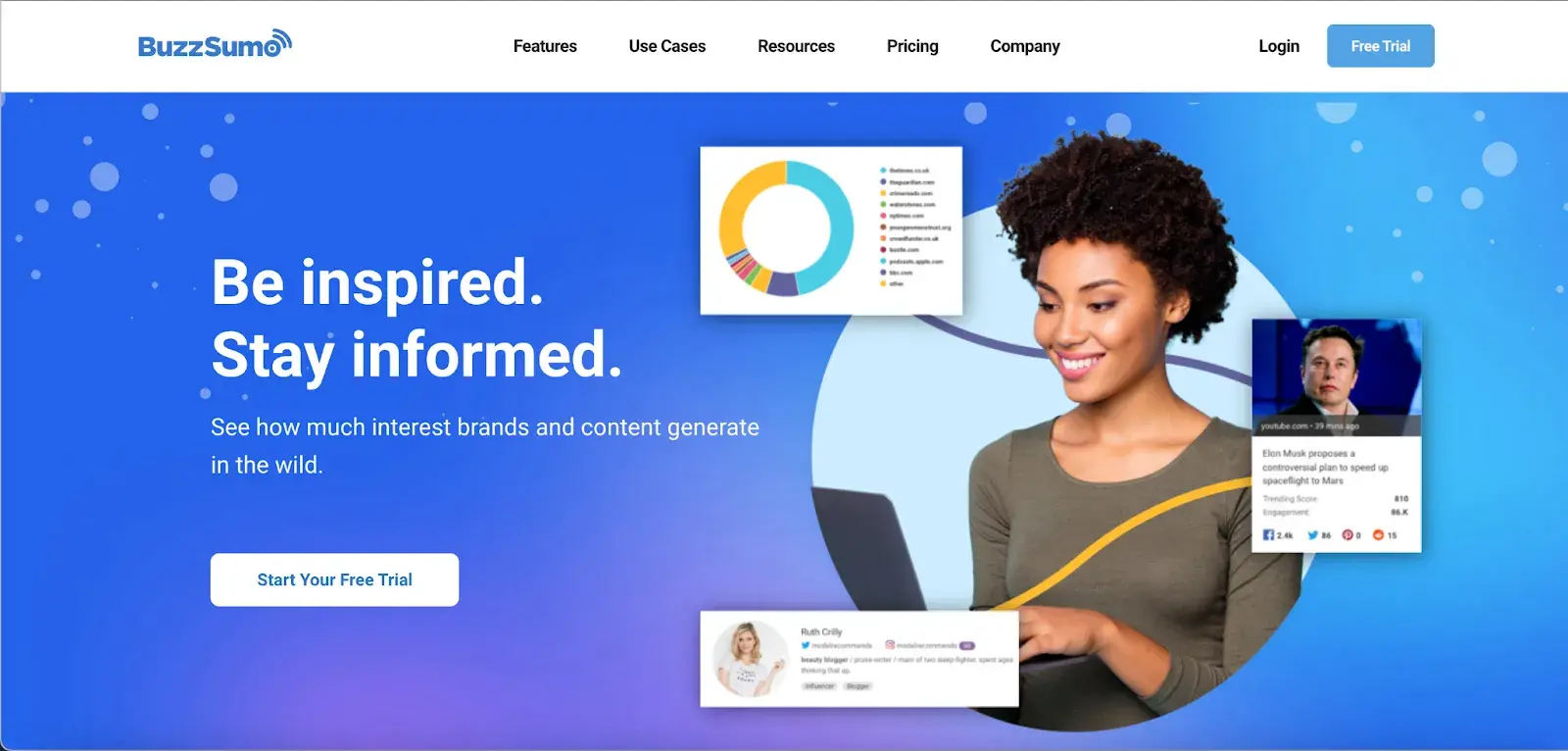5 Ways Web Design Johannesburg Agencies Are Using AI to Improve UX
Wiki Article
The Crucial Aspects of Effective Internet Design: A Comprehensive Guide
Efficient website design includes various essential components that significantly effect user experience. It demands mindful consideration of aspects such as mobile responsiveness, user-friendly navigating, and aesthetic power structure. Each element plays an essential function in crafting an internet site that not only draws in site visitors yet also maintains them. Comprehending these fundamental elements is essential for businesses intending to improve their online existence. Yet, what genuinely differentiates a successful website from its competitors?Comprehending User Experience (UX) Design
Individual experience (UX) Design serves as the foundation of efficient website design, concentrating on exactly how customers interact with a website. It includes different aspects, including functionality, availability, and total complete satisfaction. An effective UX Design begins with individual research, determining the target market's actions and demands. Wireframes and prototypes are then developed to visualize the website's structure and flow. Seo Company Klerksdorp. Checking with actual customers supplies important insights, permitting designers to boost and fine-tune the interface navigating. Aesthetic Design aspects, such as typography and color pattern, improve the total visual while sustaining capability. Inevitably, effective UX Design assurances that users can quickly complete their objectives, cultivating engagement and loyalty. By prioritizing customer experience, internet sites can attain greater conversion prices and a favorable reputationSignificance of Mobile Responsiveness
As smart phones increasingly dominate net use, making certain mobile responsiveness has actually become essential for reliable website design. Internet sites that are not enhanced for mobile can result in a bad user experience, leading to greater bounce prices and shed opportunities. A mobile-responsive Design allows web content to adapt perfectly to different screen dimensions, making certain that customers can access information conveniently, despite the device they make use of. Additionally, search engines prioritize mobile-friendly web sites in their positions, making responsiveness an essential aspect for visibility and web traffic. With a growing number of customers accessing the internet through tablets and smartphones, businesses have to purchase mobile responsiveness to enhance user involvement, enhance brand perception, and inevitably drive conversions. Efficient website design should prioritize mobile responsiveness to continue to be affordable in today's electronic landscape.Crafting Intuitive Navigating
Navigation acts as the backbone of any kind of efficient web site, guiding site visitors via content easily. An user-friendly navigating framework boosts user experience by enabling users to find information rapidly and effectively. Clear labeling of menu items is important; it must mirror the web content properly, staying clear of lingo that might confuse customers. Additionally, a rational power structure is crucial, enabling customers to recognize partnerships in between different sections. Uniformity across web pages assists reinforce assumptions, while breadcrumbs supply context and a feeling of direction. Receptive navigation food selections that adjust to different tools additionally enhance availability. Eventually, the goal is to develop a smooth journey for visitors, guaranteeing they can discover the website without frustration, resulting in an extra involved and completely satisfied audience.Utilizing Visual Hierarchy
Aesthetic power structure plays a vital function in web Design by guiding individuals' attention and improving their experience. Efficient layout techniques, along with thoughtful selections in color and typography, can greatly influence exactly how information is viewed and refined. Comprehending these components is crucial for producing aesthetically appealing and practical websites.Importance of Visual Pecking Order
Reliable website design depends upon the concept of aesthetic hierarchy, which guides customers through material in a rational and instinctive fashion. This concept is vital for enhancing user experience, as it assists focus on details and routes focus to important aspects. By establishing a clear pecking order, internet developers can guarantee that users easily determine vital messages, calls to action, and navigation choices. A well-structured aesthetic hierarchy minimizes cognitive tons, enabling users to process information successfully. In addition, it fosters involvement by developing an enticing design that invites exploration. Ultimately, recognizing the value of visual hierarchy is vital for any type of web developer intending to produce straightforward and efficient web sites that effectively communicate their desired messages.
Methods for Reliable Format
A well-organized design functions as the backbone of any successful website design, enabling individuals to easily navigate via content. Efficient strategies include grid systems, which provide a structured framework for aligning aspects, assuring consistency and balance. In addition, utilizing whitespace tactically can improve emphasis on vital locations, decreasing visual mess and directing user focus. Prioritizing web content with size and positioning even more emphasizes vital details, while different elements can produce a clear aesthetic pecking order. Executing responsive Design methods guarantees formats adjust effortlessly throughout devices, keeping usability. Ultimately, integrating intuitive navigation help, such as menus and switches, improves customer experience, making it simpler for site visitors to discover pertinent info promptly. With each other, these methods form the foundation of a reliable internet design.Shade and Typography Choices
While color and typography selections might feel like basic Design components, they play a necessary duty in developing visual hierarchy on a web site (Web Design Johannesburg). Color can assist customers' focus, set apart sections, and convey brand identity. By tactically making use of contrasting colors, designers can highlight essential telephone calls to activity, ensuring they stand apart. Typography, on the various other hand, affects readability and user interaction. An appropriate font can communicate tone and character, while varying font dimensions and weights can produce a clear framework. Larger, bolder headings draw attention, while smaller sized body message supplies in-depth details. Together, efficient color and typography choices create a cohesive aesthetic experience, leading individuals through the content effortlessly and improving general usabilitySelecting the Right Color Pattern
How does one select the suitable shade plan for a web site? Selecting the best color system is essential for boosting customer experience and conveying the brand name's message. Developers must start by thinking about the target audience and the feelings that various colors stimulate. As an example, blue often represents count on, while red can create necessity. It is necessary to limit the palette to a few complementary shades to maintain visual harmony and prevent frustrating individuals. Making use of devices like shade wheel applications can help in selecting colors that function well together. Additionally, designers must guarantee that there suffices comparison in between message Seo Company Klerksdorp and background shades for readability. Eventually, a well-balanced color design can significantly influence a site's performance and user interaction.Including Engaging Material

Engaging web content is crucial for keeping the attention and capturing of web site visitors. It works as a bridge between the website's Design and the user's experience, fostering much deeper connections. Effective web content often includes a mix of informative write-ups, captivating visuals, and interactive aspects that encourage individual engagement. By utilizing storytelling methods, internet sites can stimulate emotions, making the material a lot more relatable and remarkable. Furthermore, integrating user-generated web content, such as reviews or reviews, boosts credibility and builds trust fund with the audience. Clear calls-to-action guide users toward wanted results, ensuring they continue to be involved. Overall, a tactical strategy to content advancement not just boosts individual experience but additionally drives conversions, making it a vital facet of reliable website design.
Maximizing for Speed and Efficiency
Optimizing for rate and performance is crucial for enhancing user experience on a web site. Techniques such as picture compression, minifying CSS and JavaScript, and leveraging browser caching can substantially minimize packing times - Internet Advertising In South Africa. These approaches not only enhance efficiency however additionally add to much better online search engine rankingsPhoto Compression Methods

Minifying CSS and JavaScript
Although numerous internet designers focus on image optimization, minifying CSS and JavaScript is just as important for boosting website speed and efficiency. Minification involves getting rid of unnecessary characters from code, such as whitespace, comments, and format, without affecting its performance. This procedure leads to smaller documents sizes, which leads to much faster filling times and improved user experience. By lowering the amount of data transferred between the customer and the server, minification helps minimize data transfer use and improves overall website performance. Furthermore, search engines favor quicker web sites, which can enhance search rankings. Applying tools and automated processes for minifying these scripts can enhance web development and maintenance, making sure that efficiency remains a priority throughout the lifecycle of a website.Leveraging Browser Caching
Leveraging internet browser caching substantially boosts website speed and performance by keeping often accessed sources locally on a user's tool. This practice reduces the need for duplicated demands to the server, substantially reducing filling times for returning visitors. By utilizing HTTP headers, internet designers can define caching policies for numerous resources, such as manuscripts, photos, and stylesheets. Appropriately carried out caching approaches permit customers to experience faster page lots, causing enhanced individual complete satisfaction and interaction. In addition, online search engine favor web sites with optimized performance, potentially increasing search positions. On a regular basis evaluating and taking care of cache settings assures that users obtain updated material while still gaining from the performance of cached sources. Finally, reliable web browser caching is a vital component of enhancing web efficiency.Regularly Asked Questions
How Do I Pick the Right Website Design Tools?

Choosing the right web Design devices includes examining project requirements, recognizing individual demands, and reviewing various software attributes. Compatibility, convenience of use, and community assistance are likewise important variables to take into consideration for effective Design outcomes.
What Are Typical Website Design Mistakes to Avoid?
Common website design blunders to avoid consist of chaotic designs, poor navigating, inadequate mobile responsiveness, slow loading times, and disregarding user experience. Reliable layouts focus on functionality, accessibility, and simpleness to involve individuals and boost complete satisfaction.How Can I Gauge My Web site's Success?
To gauge a site's success, one might assess metrics such as traffic, conversion rates, customer involvement, and bounce prices. Making use of tools like Google Analytics can give useful understandings for ongoing optimization and renovation techniques.What Function Does Search Engine Optimization Play in Website Design?
Search engine optimization considerably affects internet Design by making sure that websites are structured for online search engine visibility. This consists of maximizing website rate, mobile responsiveness, and material quality, ultimately enhancing customer experience and driving organic traffic.How Often Should I Update My Internet Site Design?
The regularity of internet site Design updates relies on market fads, user responses, and technological innovations. Commonly, a refresh every 2-3 years is advisable, making sure the site continues to be pertinent and aligned with present requirements and individual expectations.User experience (UX) Design serves as the backbone of efficient internet Design, concentrating on how users communicate with an internet site. With a growing number of individuals accessing the net via mobile phones and tablets, services must invest in mobile responsiveness to improve customer interaction, improve brand name assumption, and eventually drive conversions. An intuitive navigating structure boosts user experience by allowing customers to locate information rapidly and efficiently. Effectively executed caching methods enable users to experience faster page tons, resulting in boosted customer contentment and involvement. The regularity of site Design updates depends on market fads, user feedback, and technical improvements.
Report this wiki page